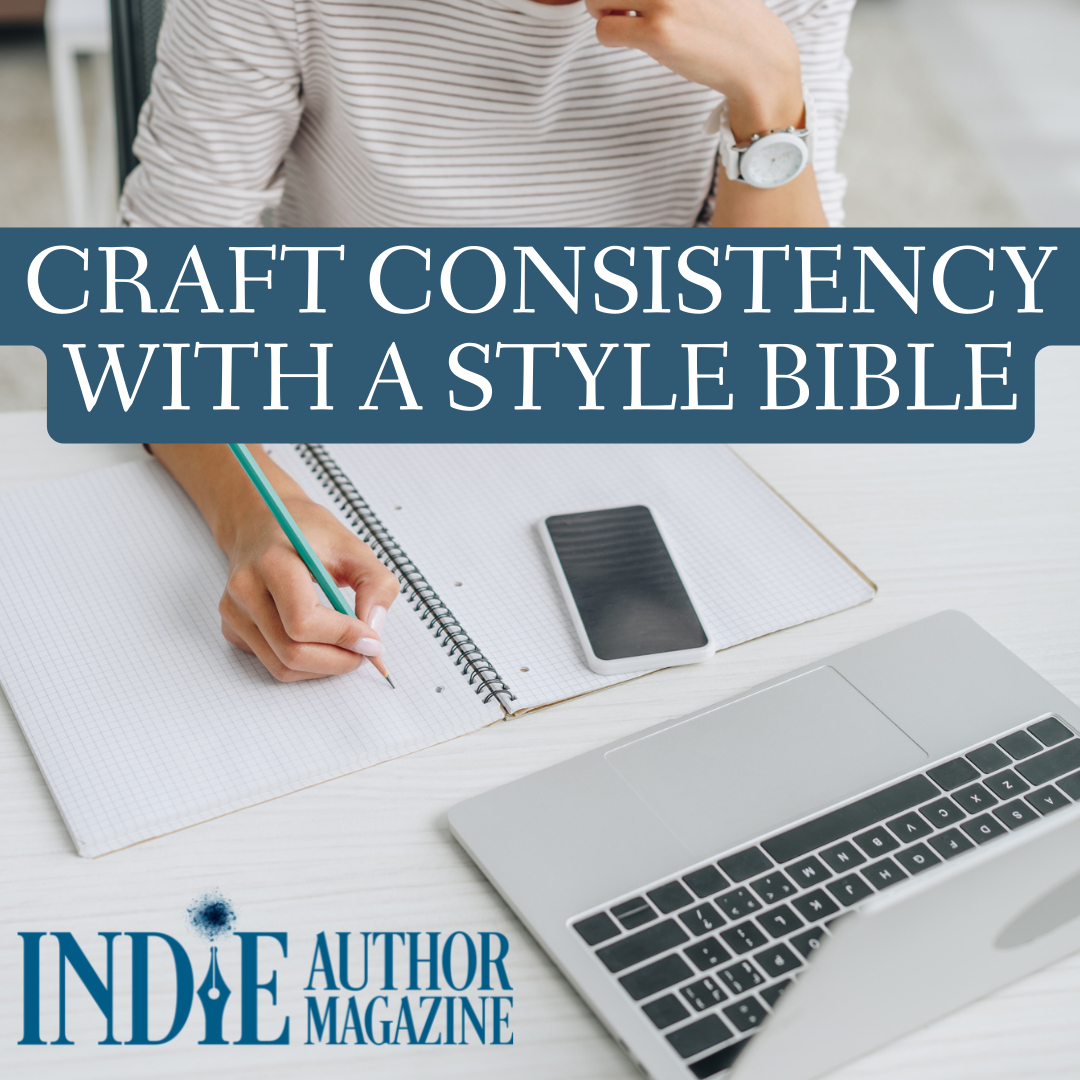Eryka Parker
Book formatting lays the cornerstone for captivating your readers from the very first glance. Beyond aesthetics, it plays a crucial role in enhancing the reader experience and establishing the credibility of your work. Meticulousness and attention to detail are necessary during the writing, marketing, and production stages, especially considering the wide variety of software platforms and devices on which books are provided. In paperback or hardcover editions, consistent formatting invites your readers to better immerse themselves in the text; in electronic formats, especially with reflowable EPUBs that allow readers to alter font and text size, it can make a sizable impact on the story’s aesthetic presence and readability.
Keeping track of your formatting preferences in a central location not only aids in your consistency and organizational skills but also reduces stress during the production process. Additionally, failing to communicate when submitting your manuscript to a typesetter increases the likelihood that they will make changes that do not align with your intended vision. This type of misunderstanding can delay the production timeline and potentially introduce inconsistencies to the manuscript as well as added expenses during the editing process.
Should you choose to format your book or work with a typesetter, a style bible may help with maintaining formatting consistency. A style bible is a comprehensive guide outlining your manuscript's formatting preferences and guidelines. Just as your editor may work with you to create editorial style guides that specify punctuation rules or unique spellings for your series, a formatting style bible can benefit both authors and publishing team members by serving as a reference for maintaining coherence in formatting.
Understanding Formatting Challenges
Before we delve into the creation of your style bible, it's essential to understand the common formatting challenges that authors face. Something as simple as minor inconsistencies across platforms or misinterpreting formatting can disrupt the reading experience and complicate your production process.
I’ve experienced these challenges firsthand while working with a typesetter. While creating my manuscript, I used automatic formatting features such as hard indentations using the tab key in the Word document. Unfortunately, the features failed to translate into Atticus, the formatting software that my typesetter used. All the formatting was altered, creating more work on her end. Needless to say, she was not very happy with me, and I felt frustrated by the need to extend my release date.
Formatting loss disrupts the author's vision and adds unnecessary time and effort to the production process at best. At worst, it can create issues with the readability of a published book that’s already in readers’ hands. When it comes to overcoming these challenges, establishing and adhering to clear formatting guidelines throughout the manuscript can allow for a smoother transition from manuscript to published work, whether you’re producing a paperback, hardback, or reflowable EPUB.
Creating a Style Bible
A style bible is a centralized repository that offers numerous benefits for authors and publishing teams alike.
Consistency: A style bible ensures consistency in formatting throughout the manuscript, including font styles, sizes, spacing, and indentation.
Efficiency: By providing clear guidelines and instructions for formatting, a style bible streamlines the editing and typesetting process. Authors and publishing teams can save time and effort by referring to the style bible for guidance, reducing the need for manual adjustments and revisions.
Communication: A style bible serves as a communication tool between authors, editors, and typesetters, so production team members understand all formatting preferences, minimizing the risk of errors or inconsistencies.
Continuity: Authors can customize the style bible to uphold their individual aesthetic and publishing goals across the scope of their book series.
Adaptability: As manuscripts may undergo revisions or be formatted for different publishing formats (e.g., e-books, print books), a style bible provides a consistent reference point for adapting formatting across various platforms. Authors can easily update their style bible as needed to accommodate changes or new formatting requirements.
Professionalism: Utilizing a style bible demonstrates to the publishing professionals on your team a commitment to professionalism and attention to detail in the publishing process.
Establishing your paragraph and character styles provides uniformity in your font style, font size, and spacing. Differentiating between character formatting and paragraph styles is crucial for maintaining consistency across platforms. Similarly, when you create a guideline for these components, it creates a cohesive reading experience.
Basic elements to consider adding to your style bible include
- Preferred fonts and styles.
- Paragraph and line spacing: This includes setting your line height, spacing before and after paragraphs, and indentations.
- Chapter headings and subheadings: You will want to format your chapter headings and subheadings to differentiate sections within your manuscript. This includes drop caps, font styles, sizes, alignment, and spacing for headings.
- Block quotes and pull quotes: Both Atticus and Vellum support formatting for block quotes and pull quotes, which can be especially useful for nonfiction authors. Customization of block quotes, including indentation, font styles, and alignment, will distinguish them from regular text, and consistent formatting can indicate to the reader the information they’ll find in those sections.
- Lists and bullet points: You can create bulleted and numbered lists within your manuscript, including customization options for bullet styles, indentation, and spacing.
- Page layout and margin customizations, taking into consideration page size and orientation depending on the print dimensions you choose.
- E-book and print formatting: For e-book and print publication, you can generate e-book files in various formats, such as EPUB, DOC or DOCX, or PDF, and print-ready PDF files suitable for publication.
Details Matter
Once you’ve decided on formatting basics for your book, here are a few additional formatting elements that you may want to include in your style bible:
Paragraph Indentation
- Specify the preferred indentation for the first line of paragraphs, such as a standard 0.5 inches. According to the Chicago Manual of Style, the standard style guide for fiction writing, the first paragraph in a chapter or other section within a manuscript normally begins flush left, and only subsequent paragraphs are indented by half an inch. This is a convention more than a rule, but most publishers today, including Chicago Manual of Style, tend to follow it. When formatting for print, the standard indent is about half that.
- Apply indentations through paragraph formatting options in your word processor, as tab indents do not carry over into KDP.
- When stating the indentation method in your style bible, provide clear instructions along with examples to illustrate the desired formatting. Additionally, consider including screenshots or step-by-step instructions for applying your preferred indentation settings. This will help editors and typesetters accurately implement the preferred indentation style throughout the manuscript.
Bulleted Lists
- Provide specific instructions on the preferred bullet style, indentation, spacing, and alignment for bulleted lists in different sections of the manuscript.
Headers and Subheadings
- Establish a clear hierarchical structure and formatting consistency for headers and subheads to guide readers through the content effectively.
- Outline the hierarchy of headers/subheads; specify the font style, size, spacing, and alignment for each level; and provide examples of their usage.
Block Quotes
- Maintain consistent formatting and indentation for block quotes to distinguish them from regular text and highlight important excerpts.
- Define the formatting for block quotes, including indentation, and specify when and how they should be used within the manuscript.
Spacing
- Ensure margins, line spacing, and indentation are consistent throughout the manuscript to create a polished and professional appearance.
- Provide guidelines for setting margins, line spacing, paragraph indentation, and spacing between headings, paragraphs, and lists.
Smart versus Straight Quotation Marks
- Smart quotes are quotation marks that curl toward the text they’re surrounding whereas straight quotes appear the same whether they’re at the beginning or end of a quote. Use smart quotes, and smart apostrophes, for a typographically correct and visually appealing presentation, ensuring uniformity across the manuscript.
- In your style bible, specify the preference for smart quotes over straight quotes, along with instructions on enabling smart quotes in word processing software and guidelines for maintaining consistency in their usage.
Pro Tip: When using Word’s advanced “Find and Replace” setting and with “Use Wildcards” checked, the codes ^34 and ^39 will identify any straight quotation marks and straight apostrophes, respectively, in your document.
Incorporating these elements into your style bible can help ensure consistency and coherence in the final manuscript when communicating your formatting preferences to editors and typesetters.
You can curate a seamless publishing journey by taking charge and simplifying your production process or your collaboration with an editor and typesetter with a well-designed style bible. This will provide a smoother production experience for you or your publishing team and could even save you time and money. A well-crafted style bible isn't just another tool in a writer’s arsenal—it's the passport to a smoother, stress-free journey from manuscript to masterpiece.
Eryka Parker


